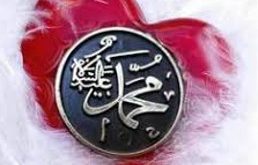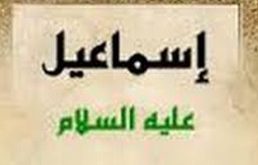‘Abdul Muttalib informed the Quraish of his dream and informed them of his decision to dig up a certain point of the Haram. The Quraish opposed him but their resistance and opposition did not concern him. Carrying his pick and shovel, he set out with his son, Haarith, and commenced …
March, 2018
-
12 March
The Dream of ‘Abdul Muttalib
When the rule of Makkah Mukarramah fell onto the shoulders of ‘Abdul Muttalib and the divine will of Allah Ta’ala decreed that the well which had been totally forgotten should now be rediscovered, He directed ‘Abdul Muttalib, by means of pious dreams, to dig up the area of the well. …
-
12 March
The Well of Zam Zam is Lost
After the demise of Hazrat Ismaa‘eel (‘alaihis salaam), his son, Qaydaar, assumed the role of trustee of the Ka’bah. This was in accordance with his parting advice. In this manner, the Banu Ismaa‘eel (the progeny of Hazrat Ismaa‘eel (‘alaihis salaam)) remained the trustees of the Ka’bah. As time passed, however, …
-
12 March
Hazrat Ismaa’eel (‘alaihis salaam) and the Jurhum Tribe
The birthplace of the Jurhum tribe was actually Yemen. A severe drought had struck Yemen and this had forced the Banu Jurhum to leave Yemen in search of more promising livelihood. During the course of their travels, they coincidentally met Hazrat Ismaa‘eel (‘alaihis salaam) and his honourable mother, Hazrat Haajar …
-
7 March
The Forefathers of Rasulullah (sallallahu ‘alaihi wasallam) – Part Seven
‘Abdul Muttalib His name was Shaybatul Hamd and he was incredibly handsome. A poet describes his beauty thus: على شيبة الحمد الذي كان وجهه يضيئ ظلام الليل كالقمر البدري “Like the luminance of the fourteenth moon, Shaybatul Hamd’s face brightens the darkness of the night.” ‘Abdul Muttalib literally means “the …
-
7 March
The Forefathers of Rasulullah (sallallahu ‘alaihi wasallam) – Part Six
Haashim (continued) During the days of Haj, Haashim would feed all the hujjaaj (pilgrims) with meat, bread, saweeq and dates and would also provide them with Zam Zam water. He would make similar provisions for them at Mina, Muzdalifah and ‘Arafaat. Umayyah bin ‘Abdu Shams was very upset over Haashim’s …
-
5 March
The Forefathers of Rasulullah (sallallahu ‘alaihi wasallam) – Part Five
Haashim (continued) Haashim was the first to initiate the custom of sending off two trade caravans a year; one to Syria in summer and another to Yemen in winter. According to this unvarying custom, a caravan would set out in every season of the year. These caravans would travel in …
-
1 March
The Forefathers of Rasulullah (sallallahu ‘alaihi wasallam) – Part Four
Haashim Imaam Maalik (rahimahullah) and Imaam Shaafi‘ee (rahimahullah) say that Haashim’s actual name was ‘Amr. There was once a severe drought in Makkah during which Haashim fed the people bread crushed into gravy. This is why he was given the title “Haashim” (The one who crushes). As a poet says: …
-
1 March
The Forefathers of Rasulullah (sallallahu ‘alaihi wasallam) – Part Three
Ka‘b In the pre-Islamic era, Ka‘b bin Luwayy would, on a weekly basis, gather all the people on the day of Friday. After all the people had assembled, he would deliver a sermon which he would commence by praising Allah Ta‘ala and explaining that Allah Ta‘ala had created the skies, …
February, 2018
-
28 February
The Forefathers of Rasulullah (sallallahu ‘alaihi wasallam) – Part Two
Ilyaas His name conformed to the name of the Nabi of Allah Ta‘ala, Hazrat Ilyaas (‘alaihis salaam). The Sunnah (tradition) of herding the Hadi (sacrificial) animals towards Baytullah (in Makkah) was commenced by Ilyaas bin Mudhar. It has been reported that Ilyaas bin Mudhar would often hear the Talbiyah of …
 Ihyaaud Deen An Effort to Revive Deen in Totality
Ihyaaud Deen An Effort to Revive Deen in Totality





